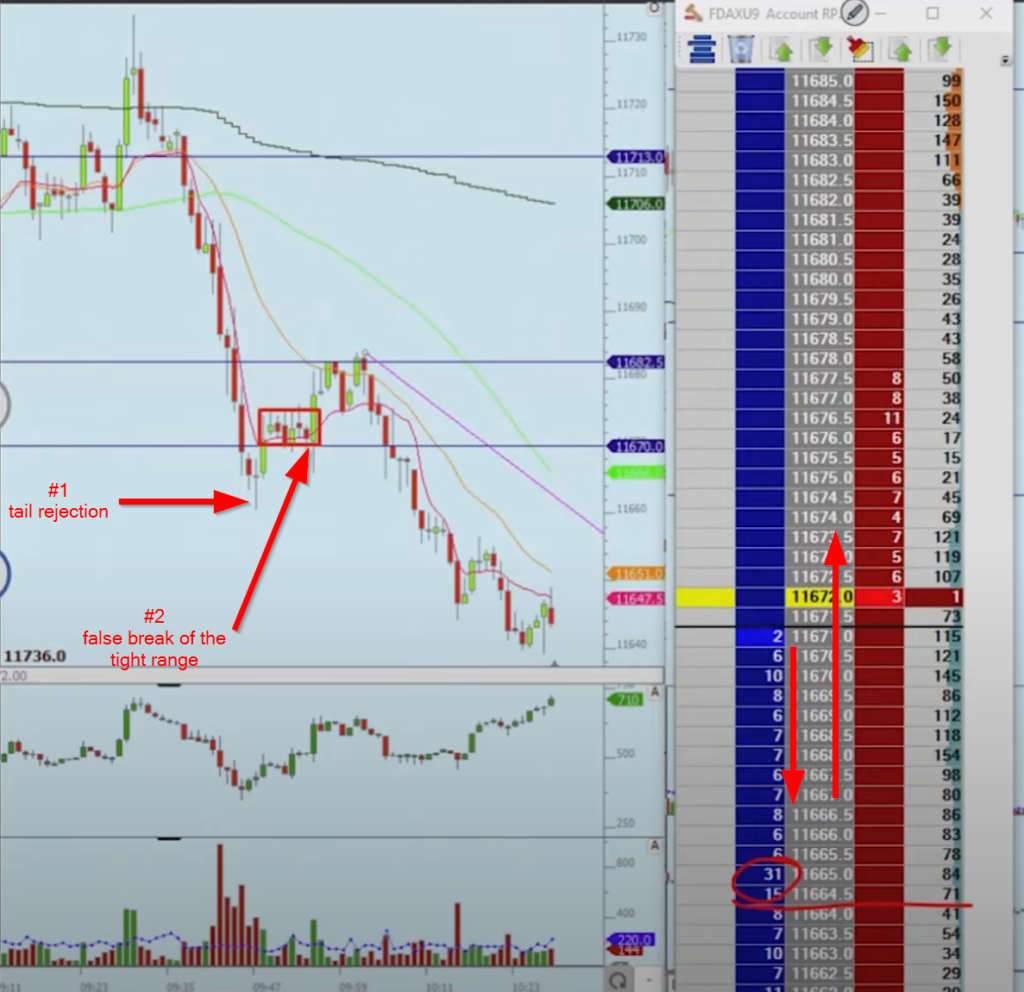Reversal And Continuation Scalping Strategies Introduction
In this blog post, we will review reversal and continuation scalping strategies in Oil and DAX. We will have a look at two examples and continue with the scalping series we have started with our previous post, where we discussed two strategies for scalping the S&P500. What is important to understand when we are scalping markets is the near-zero tolerance for “patience” with any deviation from the expected flow. Either the moves are doing what we expect or we are out. The main tool we are leaning on is the order-flow (don’t forget to check out our price ladder state of the art content). If the order-flow stops supporting our idea, it is time to get out. This goes against the general consensus that we “must be patient”. Yes, patience is crucial in trading but we must understand when we should be patient and when not.
Let’s have a look at our two scalping examples.
Scalping Around Oil Inventory Number
Introduction
In our first example, we will be leaning on the price action and order-flow activity post the inventory number in Oil. In our example inventory build release is below the expectation and the market reacts to it negatively. Rather than hitting on the number, we are waiting for the momentum to show us direction and pauses/stalls to give us clues about reversal points to attack. Let’s have a look at the context
Oil Scalping Context
If you watched the actual price ladder activity that starts here, you could have noticed CLUE for our entry short. This is what we were looking for:
- The number is released and the market drops fast
- We now have a situation where we are looking primarily for the Momentum (short) followed by a pullback to get into our short scalp.
- Within the pullback, we are looking for pullback starting to struggle. That pause, slow down and inability to move higher. In our case that was around 71, 72. That is our access point.
- Our stop is tight, just above 71,72, a couple of ticks
What is important to remember is that you are not playing for large swings. You are playing for order-flow activity change. Your target? Next pause on the tape. Watch the price ladder. Don’t aim for the new low, don’t aim for large swings. Aim for a point where it does exactly the same as with the pullback – the slow down in price action. Where it slows down, there is your target. In our case, 45-50 was your area to get out.

If you like the scalping content, don’t forget to sign up for the FREE Live Training below and get ready to take that next step right now:
https://go.elitetraderworkshop.com/Free
Scalping The DAX
Introduction
With DAX we are focusing on a reversal type of scalp. What is it that we are looking for? We are looking for the tail at the low to be put in place and the tight range that has been formed and held above the tail. Here is how the trade looked:

After the tight range has been formed (red rectangle on the image above), we are looking for the initiative to break out of the range to continue to the downside (expected move in the direction of the momentum) but we are looking for failure. That move below 70 and back above is our access signal to get long. You wait for a jump above 70, that is our signal to get in with a tight stop at 65. Again, something that you won’t be able to see without the order-flow. Watch the price ladder action here and see what it did around the 70, going under and over. Aim for the very short-term level-to-level move or slowdown in price action.
For context, don’t forget to check the full video.
If you liked this type of content, you might check these videos as well:
- How To Manage & Exit A Failed Breakout Trade
- Sign Of A Breakout About To Fail – Price Ladder Trading
- Market Profile Trading: Better Breakouts with Context and Volume Profiling
Do you like what you have been reading? If you would like to improve your game, definitely check one of our courses that teach you all the techniques presented by AXIA traders from a market profile, footprint, or order-flow. If you are someone who likes to trade the news, we have a great central bank course. And if you are really serious about your future trading career, consider taking AXIA’s 6-Week Intensive High-Performance Trading Course.
Thanks for reading again and until next time, trade well.
JK




